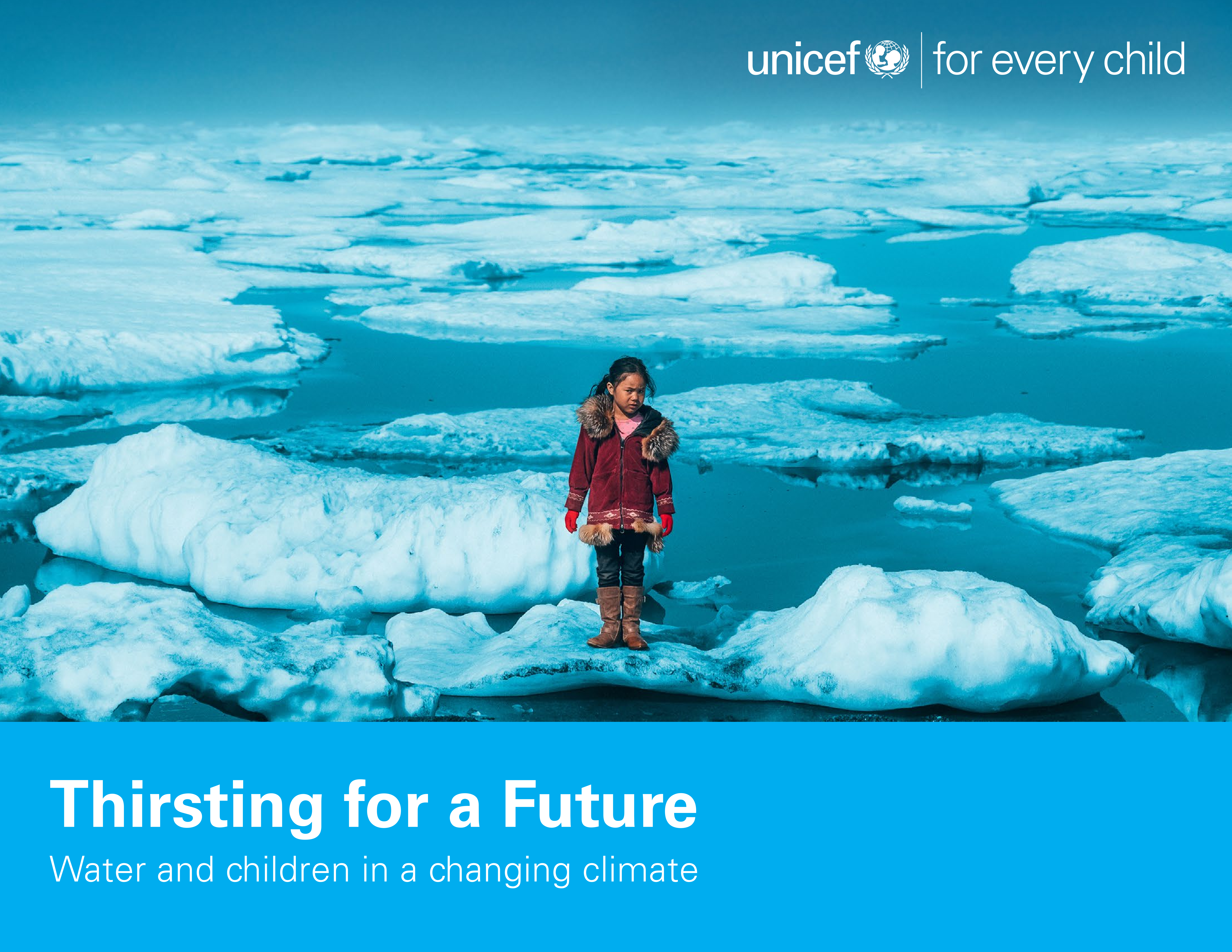New UNICEF Report: Water and children in a changing climate
On 22 March 2017, on the occasion of World Water Day, UNICEF launched a new report to highlight the threats to children’s lives and wellbeing caused by depleted sources of safe water and the ways climate change will intensify those risks in coming years.
Nearly 600 million children will live in areas with extremely limited water resources by 2040 – UNICEF.
On 22 March 2017, on the occasion of World Water Day, UNICEF launched a new report to highlight the threats to children’s lives and wellbeing caused by depleted sources of safe water and the ways climate change will intensify those risks in coming years.
Water is elemental; without it, nothing can grow. But around the world, millions of children lack access to safe water — endangering their lives, undermining their health, and jeopardizing their futures. This crisis will only grow unless we take collective action now,”
Anthony Lake. UNICEF Executive Director and Chair of the SUN Movement Lead Group.
According to the report, 36 countries are currently facing extremely high levels of water stress, which occurs when demand for water far exceeds the renewable supply available. Warmer temperatures, rising sea levels, increased floods, droughts and melting ice affect the quality and availability of water as well as sanitation systems. Population growth, increased water consumption, and higher demand for water largely due to industrialization and urbanization are draining water resources worldwide. Conflicts in many parts of the world also threaten children’s access to safe water.
Download the report: English
Download an Executive Summary: English | Français | Español
All of these factors force children to use unsafe water, which exposes them to potentially deadly diseases like cholera and diarrhoea. Many children in drought-affected areas spend hours every day collecting water, missing out on a chance to go to school. Girls are especially vulnerable to attack during these times.
The report also notes that:
- Up to 663 million people globally do not have access to adequate water sources and 946 million people practice open defecation.
- Over 800 children under the age of five die every day from diarrhoea linked to inadequate water, sanitation and hygiene;
- Globally, women and girls spend 200 million hours collecting water every day.
The report concludes with a series of recommendations that can help curb the impact of climate change on the lives of children. Such measures include:
- Governments need to plan for changes in water availability and demand in the coming years; Above all, it means prioritizing the most vulnerable children’s access to safe water above other water needs to maximize social and health outcomes.
- Climate risks should be integrated into all water and sanitation-related policies and services, and investments should to target high-risk populations.
- Businesses need to work with communities to prevent contamination and depletion of safe water sources.
- Communities themselves should explore ways to diversify water sources and to increase their capacity to store water safely.
Learn more >> UNICEF Press Release, UNICEF Interactive Report Page.
